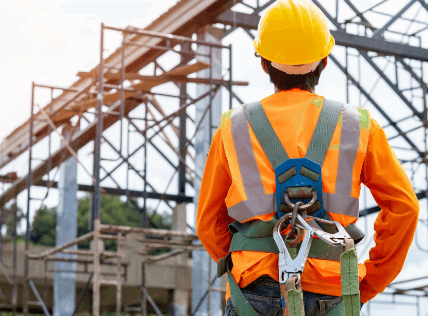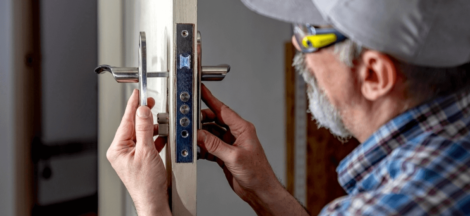Safety is a top priority in the construction industry. It’s essential to ensure that everyone is doing their part to keep the worksite safe and secure.
To ensure this, proper safety protocols must be put in place – like a fortress protecting its inhabitants.
Here are some of the best practices for concrete construction site management that will help you build an impenetrable shield of safety around your worksite.
From training employees to enforcing rules, these steps will ensure that your project runs smoothly and safely without any hiccups or accidents.
Ensure Proper Training
It’s important for employers to develop strategies that will ensure compliance from staff and subcontractors
All workers should be encouraged to participate in ongoing training opportunities so they stay up-to-date and aware of any potential hazards on-site.
Additionally, supervisors should provide regular feedback so that everyone is held accountable for following safety procedures at all times.
By investing in comprehensive training initiatives, employers can create a safe work environment where everyone works together towards a common goal of completing the project without any accidents or injuries.
Implement Safety Equipment
You should provide personal protective equipment (PPE) for all workers on the construction site to ensure their safety. This PPE includes hard hats, safety glasses, gloves, and masks to protect against dust.
Additionally, adequate lighting should be provided to ensure that all workers can see where they’re going and what they’re doing in a safe manner.
Provide personal protective equipment (PPE)
Don’t let an accident happen – provide PPE for everyone on the job! Personal protective equipment (PPE) is essential for construction sites, and you should always check that every worker is wearing the necessary gear.
Make sure to:
* Track usage:
* monitor stockpiles of supplies regularly
* track workers’ use of PPE throughout the day
* Check compliance:
* require all workers to wear proper clothing and safety gear at all times
* ensure employees are trained in how to safely use PPE
Providing your team with the correct safety equipment won’t only help prevent accidents, but also give them extra confidence and peace of mind knowing they can work without fear of harm.
This way, you’ll be able to rest assured that your team is safe and sound while working onsite.
Ensure proper lighting
Adequate lighting is essential for a successful construction project – in fact, research has shown that having proper illumination levels on the job can reduce accidents by up to 30%.
It’s important to ensure that all areas of the construction site are well lit at all times. This includes walkways, workspaces, and any other areas where personnel may be present. Proper lighting should be sufficient enough to provide adequate visibility without causing eye strain or fatigue.
It should also be bright enough to reveal any potential hazards that may exist in the area. When selecting lights for a construction site, it’s important to consider factors such as wattage, position, and color temperature.
Lights with higher wattage will produce brighter illumination while those with lower wattages will produce softer light. The placement of lights is also key – they should be placed strategically so as not to cause glare or shadowing.
Finally, selecting lighting based on color temperature can help create a more comfortable working environment and reduce eye strain or fatigue from long hours of work in low light conditions.
Designate a Safety Officer
You’re responsible for the wellbeing of everyone on your worksite, so appointing a safety officer is essential to ensure all are kept safe.
This includes setting up an emergency protocol in case of accidents and providing necessary training for the staff.
A good safety officer should have experience in working with hazardous materials and equipment, as well as a strong understanding of construction site regulations. The safety officer should also lead weekly inspections to make sure that employees are following proper safety procedures at all times.
Additionally, they should be able to give feedback and recommendations on how workers can improve their safety practices in order to minimize unnecessary risks. By taking these steps, you can ensure that your construction site remains compliant with industry standards while keeping everyone safe from harm.
Enforce Site Rules
It’s essential that you establish and enforce safety protocols on your concrete construction site. This includes providing employees with the proper protective equipment, setting up a clear chain of command, and instituting rules about general conduct.
You should also regularly inspect the site for potential hazards, such as unstable terrain or hazardous materials, to ensure that your team remains safe while working.
Establish and enforce safety protocols
To ensure success, it’s a must to establish and enforce protocols – not an option. Properly managing a construction site requires developing safety protocols tailored to the specific requirements of each project.
These protocols should be established in advance and communicated to all personnel on the job site. They should address such topics as proper use of safety equipment, hazardous material containment procedures, and work zones access restrictions.
It’s also important to monitor compliance with these safety protocols throughout the duration of the project. This will help to identify any risks or potential hazards that need to be addressed quickly in order to maintain a safe working environment for everyone involved.
Regularly inspect the site for potential hazards
Regularly assessing the environment for potential issues is essential in order to maintain a secure atmosphere and ensure that all personnel remain safe.
Inspecting the construction site regularly is an important part of this process. This includes checking for physical hazards like debris, uneven surfaces, or hazardous materials that could cause injury or illness.
Additionally, it’s necessary to look out for electrical hazards from exposed wiring or other sources of electricity. By regularly inspecting the site for these potential hazards, you can prevent accidents and keep everyone at the construction site safe.
Create a Culture of Safety
This means starting with establishing an environment where all members of your team feel comfortable speaking up when they see something that could be dangerous or hazardous.
Promote awareness of safety protocols through regular training sessions and make sure everyone knows who is responsible for what tasks and how those tasks should be done safely.
Additionally, fostering trust among workers is key in creating a safe work environment – if someone sees something amiss, they need to know that it will be addressed appropriately without repercussions towards them.
By taking these steps, you can create a culture of safety on your construction site which will minimize the risk of accidents or injuries.
Conclusion
You’ve come a long way towards ensuring the safety of your construction site! By implementing these best practices, you’re taking the steps necessary to protect yourself and your team.
With proper training, safety equipment, a designated officer, and strict rules in place, you’ll have an environment where everyone can feel safe and secure.
Your commitment to creating a culture of safety is commendable – it’s clear that you take the safety of your crew seriously.





 System_application_reading_0004
System_application_reading_0004